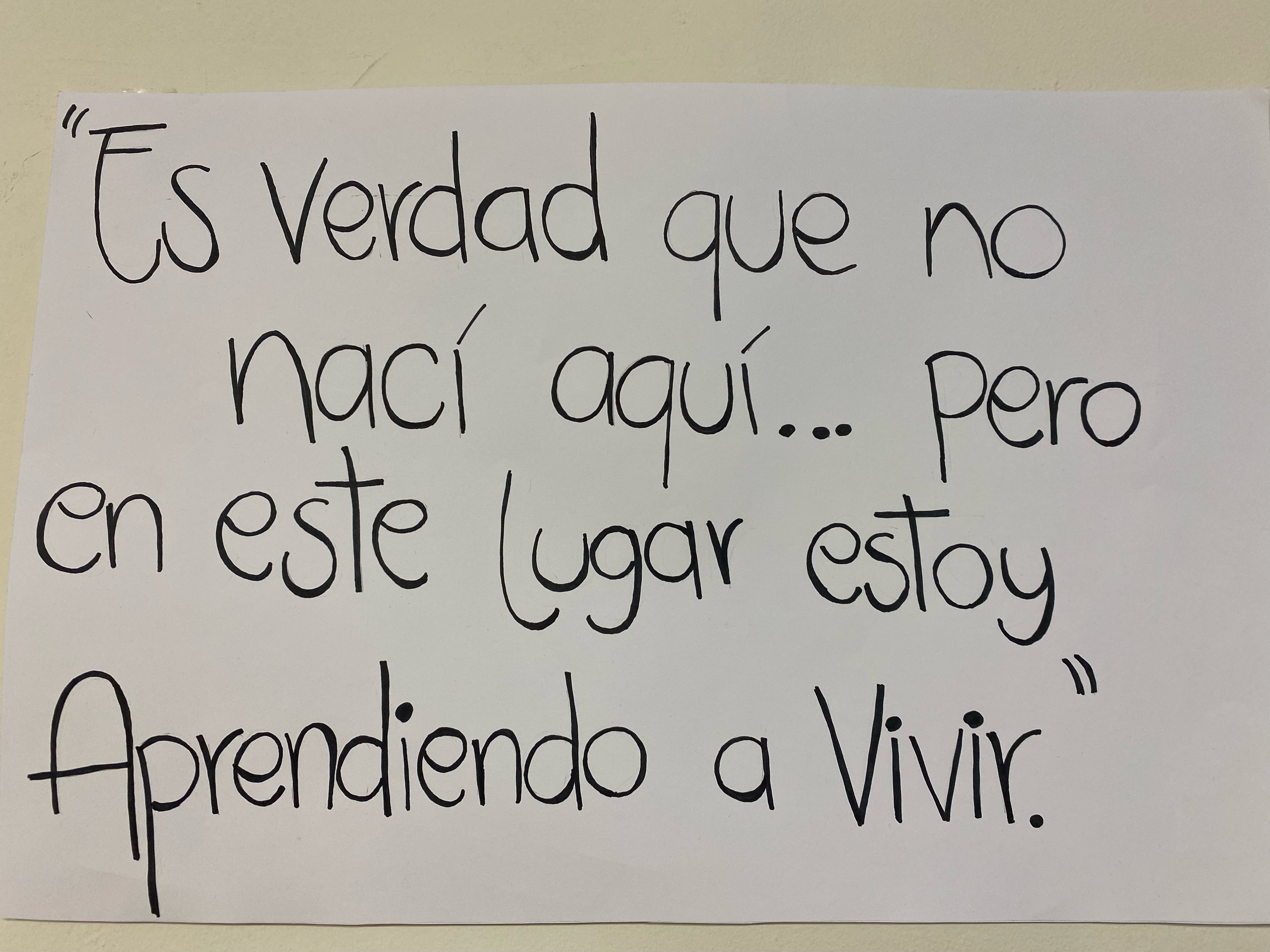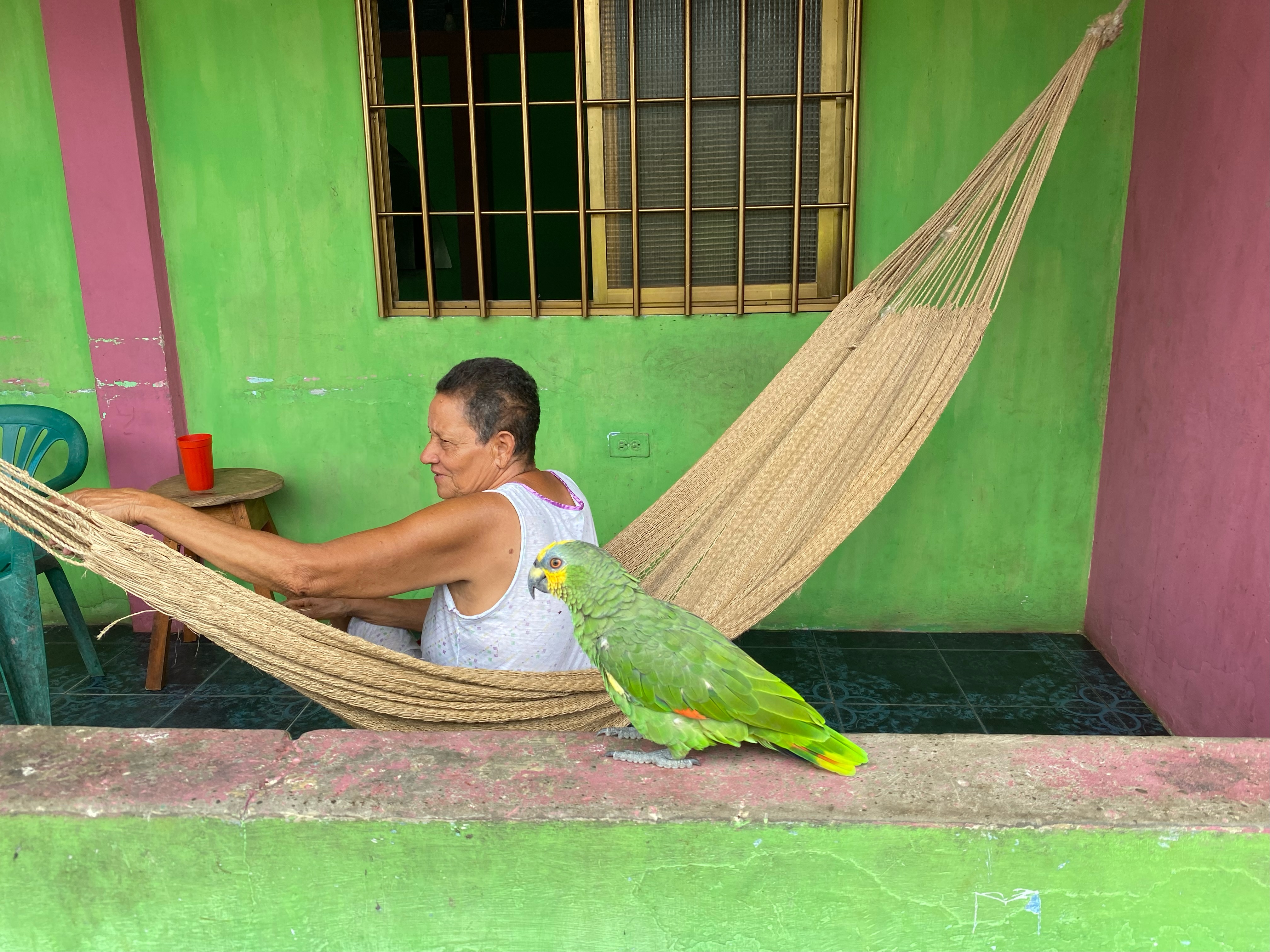Migration Crisis in North America 🇲🇽🇺🇸

A message found in International Rescue Committee (IRC) Office, Ciudad Juarez, Mexico, May 2023
In May 2023, I traveled once again to Mexico, this time heading to Ciudad Juárez, a city on the northern border of the country, where I was tasked with supporting our partners in managing the ongoing migration crisis. The situation on the US-Mexico border had reached critical levels, with thousands of migrants—often referred to as caminantes—seeking to cross into the United States, many of them fleeing from violence, poverty, and persecution in their home countries.
Humanitarian Efforts in Ciudad Juárez
During my visit to Ciudad Juárez, I met with various humanitarian partners, including UNHCR, IOM, and NGOs such as IRC and HIAS. These organizations were on the front lines, providing critical support to migrants who had traveled great distances in search of a better life. I also had the chance to meet with local state and municipal authorities, who were grappling with the increased demand for services and shelter.
Visiting Shelters for Migrants
I visited several migrant shelters both in the city and in its outskirts, where caminantes (also referred to as hopefuls) were staying temporarily while they waited for the opportunity to cross the border into the United States. The shelters were basic, but they offered some respite to those who had been traveling for weeks, sometimes months, in dangerous conditions. I saw firsthand the challenges that migrants face in these shelters, from lack of resources to the emotional toll of uncertainty about the future.
The shelters were often overwhelmed, with hundreds of people in need of food, medical attention, and psychosocial support. The migrants I spoke to had heartbreaking stories—many of them had been traveling alone or with their families, fleeing situations of violence, gang activity, and economic hardship in Central America and Mexico.
Crossing the Border – A Journey of Hope and Uncertainty
One of the most striking moments of the trip was when I had the opportunity to visit the US-Mexico border and see the fence that separates the two countries. The Rio Grande river, which runs along the border, was both a physical and symbolic barrier. Many migrants attempt to cross this river to reach the United States, risking their lives in the process.
I also walked across the international bridge into El Paso, Texas. This was my first time crossing the border, and it was a surreal experience. On the other side of the border in the United States, I visited several migrant support projects run by Caritas and various other NGOs working to support migrants as they arrived in the US. The US side of the border had its own set of challenges, with organizations working to process migrants, provide legal support, and offer temporary shelter.
While in El Paso, I spoke with several caminantes who had successfully crossed the border. Many of them were hoping to seek asylum in the US, but they faced a complicated legal process and often lived in precarious conditions. It was deeply humbling to hear their stories—many of them had faced immense challenges during their journeys, and yet, they still held onto hope for a better future.
Exploring El Paso – A Different Side of the US
I also had two days off in the US, which gave me a chance to explore El Paso and the surrounding area. I took some time to visit Sunland Park (New Mexico), a town near the border, where I appreciated the stark contrast between the US and the Mexican side of the border. The landscapes of west Texas were arid but stunning, with wide desert views and mountain ranges in the distance. It was a part of the US that was unfamiliar to me, but I enjoyed discovering the area and getting a sense of its culture and community.
The Migration Crisis in 2023
The migration crisis at the US-Mexico border in 2023 was one of the most pressing humanitarian challenges in the region. The caminantes I spoke with were part of a larger pattern of migration driven by violence, economic hardship, and climate change. The migrants—many of whom were families and children—faced enormous obstacles, including overcrowded shelters, limited access to legal support, and uncertain futures.
While organizations like UNHCR, IOM, and Caritas were doing their best to provide emergency relief and support, the sheer scale of the migration crisis meant that there was still much work to be done to meet the basic needs of those on the move.
Returning to Panama
After my visit to Ciudad Juárez, I flew to Houston and then returned to Panama City, reflecting on the experience. It was a humbling trip, and it gave me a deeper understanding of the challenges facing migrants at the border. The stories I heard, the struggles I witnessed, and the hope I saw in the faces of the caminantes reminded me of the importance of providing humanitarian support in times of crisis.
Click here to access the album.
Introduction to Venezuela 🇻🇪

Capure, Delta of Orinoco RIver, Venezuela, April 2023
At the end of April 2023, I traveled to Venezuela for the first time. By then, I already knew I would be moving to the country in the upcoming months. This trip was crucial for me to prepare for the transfer, get to know the local context, and meet my new team.
Exploring Caracas – First Impressions of the Capital
Upon arrival in Caracas, I spent a few days meeting with humanitarian actors, getting to know the local working environment, and connecting with my future colleagues. Caracas was a city of contrasts—while it faced significant challenges, the resilience of its people was evident. During my free time, I explored the city, taking in the views from Ávila National Park and wandering through the vibrant streets. It was a city with warmth despite its hardships, and I was struck by the optimism and strength of its people.
Humanitarian Projects Across Venezuela – First Part of the Trip
I then traveled to several regions to visit humanitarian projects supported by ECHO. The aim was to understand the local humanitarian context and see how we could provide support in the most effective way. I visited places like Maracaibo, Cují Gacho, Paraguaipoa, Cojoro, and Guarero—each of which had unique challenges.
• Cují Gacho: This area, located in the Zulia state, was facing significant healthcare access issues. Local clinics were overwhelmed, and the economic situation had strained public services. The community members were hardworking but needed critical support to access basic health services.
• Paraguaipoa: A remote village in Zulia, Paraguaipoa was grappling with limited infrastructure and difficulty accessing essential resources like clean water and medications. The area’s isolation made it a priority for humanitarian projects.
• Cojoro: Located in the western region, Cojoro faced similar challenges, with the added burden of economic hardship. Local farmers and residents struggled with food insecurity, and there were efforts to improve agriculture support and disaster preparedness in the region.
• Guarero: In Guarero, located in the northern states, many families were facing housing challenges, with many homes damaged or destroyed by past storms. Efforts to provide shelter and rebuild communities were underway, but much more support was needed.
In all these locations, the efforts of local organizations and humanitarian responders were incredibly inspiring. While the needs were immense, I saw a strong commitment to improving conditions and providing assistance where it was most needed.
The Journey to Delta Amacuro – Beginning the Second Part of the Trip
After spending time in Caracas and visiting some of the key areas, the second part of my journey began with a flight to Maturín, the gateway to the Delta Amacuro region. This area is one of the most remote and challenging regions in Venezuela, home to various indigenous communities and a region that faces unique obstacles in terms of access to aid and resources.
The Orinoco River and Delta Amacuro – Navigating the Heart of Venezuela’s Indigenous Communities
The boat journey along the Orinoco River to San Rafael, Capure, and Pedernales was one of the most memorable experiences of my trip. The Orinoco Delta is a vast network of mangroves, channels, and islands, with isolated communities living along its banks. The journey allowed me to see firsthand the difficulties these communities face in accessing basic services like healthcare, education, and clean water.
• San Rafael, Capure, and Pedernales are some of the small communities in Delta Amacuro that rely heavily on the river for transportation and livelihoods. The isolation of these areas meant that humanitarian aid could not always reach as quickly as it should, and residents often faced limited access to essential resources.
• Indigenous groups, such as the Warao, who live in this area, face particular challenges. Their communities are remote, and many rely on the river as their lifeline. Yet the lack of proper infrastructure, transportation, and healthcare services puts them at a disadvantage when it comes to surviving and thriving. Many communities in Delta Amacuro also face issues of food insecurity, with little access to nutritious food and agricultural support.
The boat journey through these communities was both exciting and eye-opening. I was struck by the beauty of the river and its surroundings, but I was also reminded of the immense challenges faced by the people living in such remote areas.
Tucupita and the Communities of Delta Amacuro
After spending the night in Tucupita, the capital of Delta Amacuro, I continued my journey through the region, visiting even more isolated communities. I was continually impressed by the resilience of the people I met, as well as the hard work of local responders, who were working tirelessly to deliver aid, food, and healthcare to these vulnerable populations.
Returning to Caracas – Reflection and Preparation
After my time in Delta Amacuro, I returned to Caracas to reflect on the trip and prepare for the next steps in my mission. The experience provided me with a much deeper understanding of the humanitarian challenges in Venezuela, particularly in the isolated indigenous communities. It was clear to me that there was much work to be done, but the passion and determination of the local people were a constant source of inspiration.
Two weeks later, I returned to Panama City, feeling grateful for the opportunity to contribute to the ongoing efforts in Venezuela. I was eager to start my new role and continue supporting the humanitarian work in the country.
Click here to access the album.
